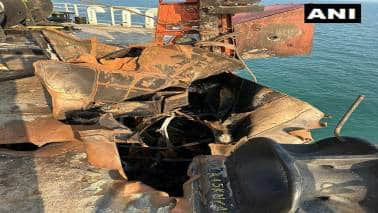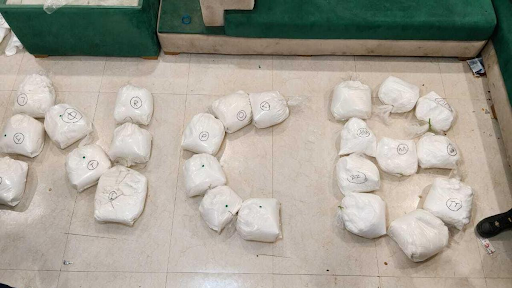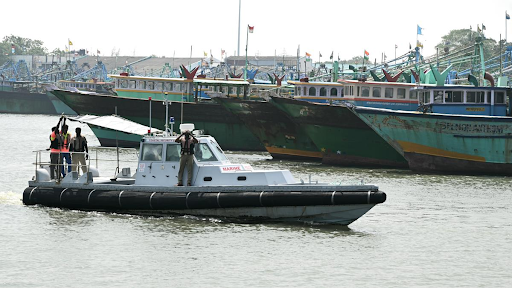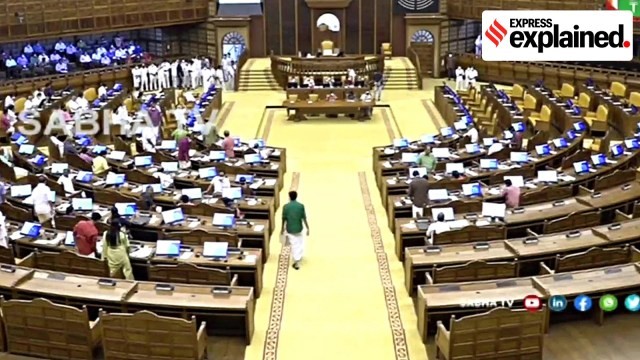Description

Disclaimer: Copyright infringement not intended.
Context
- Iran has rejected the United States’ claim that it was behind a drone attack on MV Chem Pluto, saying that the accusations were meant to distract from Washington’s complicity in ‘Israel’s crimes in Gaza’.
Details
Incident Overview
- Attack Details: MV Chem Pluto, a Liberia-flagged chemical tanker, was hit by a drone strike approximately 200 nautical miles off the Gujarat coast. A fire ensued but was promptly extinguished, resulting in no casualties.
- Escorted Arrival: Indian Coast Guard Ship (ICGS) Vikram escorted the damaged vessel to Mumbai, where it arrived safely on December 25.
- Voyage Information: The tanker was transporting crude from Saudi Arabia to New Mangalore and was associated with Amsterdam-based Ace Quantum Chemical Tankers, jointly owned by Israeli billionaire Idan Ofer.
- Potential Motivation: The attack is speculated to be linked to its Israeli affiliation, as Ofer has ties to Israel. Several
Geopolitical Context
- Houthi Involvement: The Houthis, engaged in a long-standing conflict with Yemen's official government, have targeted Israel-associated ships in response to Israel's actions in Gaza. This represents an extension of the Gaza conflict.
- Proxy War Dynamics: Experts view the Yemeni Civil War as a proxy war between Iran, supporting the Houthis, and Saudi Arabia and Western nations backing Yemen's official government.

Global Ramifications
- Impact on Global Trade: Attacks in the Red Sea, a crucial trade route connecting the Mediterranean Sea to the Indian Ocean via the Suez Canal, pose significant threats to global trade, accounting for about 12% of global trade movement.
- Economic Disruption: Major shipping companies like AP Møller-Maersk and British Petroleum have altered their shipping routes due to security concerns, incurring higher costs and potential delays, impacting the global economy.
International Response
- Multinational Security Initiative: The US announced Operation Prosperity Guardian, a multinational security initiative involving various countries to safeguard merchant vessels and counter Houthi attacks in the region.
Drones and national security
- These remotely piloted aircraft have brought about both positive advancements and challenges in various spheres, influencing security dynamics in multifaceted ways.
Positive Impacts:
- Surveillance and Intelligence Gathering: Drones equipped with high-resolution cameras and sensors offer enhanced surveillance capabilities, aiding security agencies in monitoring border areas, coastal regions, critical infrastructure, and inaccessible terrains. They provide real-time data for intelligence gathering without risking human lives.
- Search and Rescue Operations: In disaster management scenarios, drones play a pivotal role in search and rescue missions. They can access remote or hazardous areas, locate survivors, and deliver aid, significantly improving response times and effectiveness during natural calamities or accidents.
- Infrastructure Protection: Drones assist in securing critical infrastructure such as power plants, dams, and oil refineries by conducting aerial inspections, detecting vulnerabilities, and ensuring timely maintenance, reducing risks of sabotage or accidents.
- Law Enforcement and Counterterrorism: They aid law enforcement agencies in monitoring public events, crowd control, and tracking criminal activities. Additionally, drones are instrumental in counterterrorism efforts, providing actionable intelligence and assisting in targeted operations against threats.
- Technological Advancements: Ongoing developments in drone technology, including autonomous flight capabilities, artificial intelligence, and payload versatility, offer prospects for improved security applications and operational efficiency.
Security Concerns:
- Airspace Violations and Intrusions: Unauthorized drones pose a significant challenge by breaching restricted airspace, threatening sensitive installations, and interfering with commercial aviation, raising concerns of safety and security.
- Smuggling and Contraband Delivery: Drones are utilized for smuggling illegal goods, narcotics, or weapons across borders, bypassing conventional security measures, thus necessitating strategies to counter illicit activities.
- Terrorist Threats: Malevolent actors may exploit drones for surveillance, reconnaissance, or carrying improvised explosive devices (IEDs), enhancing their asymmetric capabilities and posing security threats to public spaces or critical assets.
- Regulatory and Legal Framework: India faces challenges in formulating robust regulations to govern drone operations, ensuring compliance, and addressing privacy concerns while balancing innovation with security imperatives.
- Technological Vulnerabilities: Concerns persist regarding the susceptibility of drones to hacking, signal jamming, or cyberattacks, potentially compromising data integrity, control systems, or leading to misuse.
Drone Attacks in India:
- First Drone Attack: India witnessed its initial drone attack at Air Force Station Jammu on June 27, 2021, where two low-flying drones carried Improvised Explosive Devices (IEDs).
- Subsequent Drone Sightings: Drone sightings have been recurrent since August 2019, especially along the Pakistan border, with over 150 sightings reported so far.
- Security Concerns: These incidents have raised concerns about the vulnerability of sensitive installations to drone-based threats.
Counter-Drone Efforts Globally:
- USA: Established the Joint C-UAS Office (JCO) in 2019, focusing on countering small Unmanned Aircraft System (sUAS) threats by synchronizing and directing activities across various domains.
- UK: Operates the National Protective Security Authority (NPSA) and a counter-drone unit to ensure efficient implementation of anti-drone measures.
- NATO and Interpol: Conducted Counter Unmanned Aircraft Systems (C-UAS) exercises involving multiple countries to enhance technical interoperability and coordination in countering drone threats.
- Drone Catchers: Nations like Ukraine received interceptors, like the 'Shahed catchers' from the US, to physically capture rogue drones.
Developments in India:
- Drone Policy and Regulation:
- The Drone Rules, 2021: Introduced by India's Ministry of Civil Aviation, outlining guidelines for drone operations and safety measures.
- Drone (Amendment) Rules, 2022: Recent changes made to drone laws, emphasizing certification, unique identification numbers, and registration requirements akin to firearms registration.
- National Counter Rogue Drone Guidelines 2019: Focuses on preventing drone misuse, highlighting the need for drone detection and neutralization measures, while acknowledging existing limitations in response mechanisms.
- Unmanned Aircraft Systems Rules 2021 (National Drone Policy 2.0): Categorizes Unmanned Aircraft Systems into various types, including airplanes, rotorcraft, and autonomous aircraft systems, further refining regulations from the previous policy.
- Drone Policy and Development: India is in the process of formulating an anti-drone policy. The Defence Research and Development Organisation (DRDO) is working on Directed Energy Weapon (DEW) technology, including DURGA II, a 100 KW lightweight DEW system.
- Anti-Drone Measures:
- Short-range anti-drone technology developed by DRDO was deployed during Prime Minister's security on Independence Day.
- Plans to acquire Heron TP long-endurance drones from Israel and multi-mission armed Predator drones from the US to enhance surveillance and combat capabilities along the Line of Actual Control (LAC).
- Diverse Drone Fleet:
- Acquisition plans include Sea Guardian drones for the Navy, Fire-Fly 'loitering munition', Harpy and Harop loitering munition, Rustom-2 surveillance drone with various payloads, and the CATS Warrior autonomous unmanned aerial vehicle.

Conclusion
The incident highlights the complex interplay of regional conflicts, proxy warfare, and their ripple effects on global trade and security, necessitating coordinated international efforts to ensure maritime stability and safeguard vital trade routes.
|
PRACTICE QUESTION
Q. Analyze the evolving role of drones in both defensive and offensive capacities, and how the proliferation of unmanned aerial technology poses challenges and opportunities for global security dynamics. (250 Words)
|










